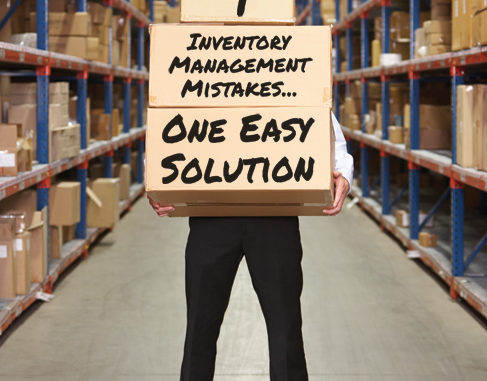
Managing excess inventory is a challenge in even the most efficient organizations. Overage issues can drain profitability and take your focus away from core business priorities. Liquidating stock or even giving it away to employees might seem like good short-term solutions, but they are among the biggest mistakes a company can make when dealing with excess inventory. Here are some of the most common—though misguided—strategies companies use to deal with unsold stock.
Mistake #1: Do nothing
Why it’s tempting: What could be easier than putting off decisions about what to do with your slow-moving inventory? Why it’s wrong: Time, and the inevitable accumulation of inventory, will take its toll. And at year end, you’ll be paying increased taxes. So just sitting on your hands will cost you.
Mistake #2: Lease additional space
Why it’s tempting: Out of sight means out of mind. No worries, right? Why it’s wrong: Your overage may be out of sight, but by leasing additional warehouse space, all you’re doing is contributing to the profitability of storage and logistics warehouse companies instead of your own business. And why do you want to pay extra to house products that just aren’t selling?
Mistake #3: Liquidate it
Why it’s tempting: You can move those old products that aren’t selling out of your warehouse to make room for new, and hopefully, more profitable ones. Why it’s wrong: If you choose to sell your excess inventory at a dime or pennies on the dollar, the product may wind up in secondary markets competing against your own efforts to sell current stock. You may even get calls from unhappy customers because you’ve gotten in the way of their sales and cut into their profit margins. Liquidation can lead to strained customer relationships.
Mistake #4: Continue selling it
Why it’s tempting: It’s familiar. Why it’s wrong: All that doing the same thing over and over again will ever accomplish is to give you the same result—excess merchandise in your warehouse. If sales have tapered off on certain products, why would they pick up again at a later date? Don’t hang on to outdated and stale merchandise. Why not move on to newer, more attractive and likely more profitable product lines? Innovate, don’t stagnate.
Mistake #5: Give it away locally
Why it’s tempting: It makes you feel good and it can boost your image locally. Why it’s wrong: Giving away small amounts of product locally might reduce sales and get people used to the idea that they can expect the same in the future. Getting involved on a local board, volunteering for a special event or helping local charities raise funds might be more effective.
Mistake #6: Sell it to your employees
Why it’s tempting: Selling to people who already support your products is cheap and easy. Why it’s wrong: Although employee discounts are not uncommon and can be a nice perk, this Band-Aid approach will only mildly—and temporarily—reduce inventory levels.
Mistake #7: Give it away to your employees
Why it’s tempting: You can get rid of excess stock and feel like you’re doing something nice for your employees. Why it’s wrong: If you allow your employees to take moderate amounts of product home with them, expect your product to start showing up on eBay. Sure, you could impose a strict “no re-selling” rule—but you’re already giving your employees the leftovers, do you really want to do anything else that might tarnish your image?
Mistake #8: Sell it to your top accounts
Why it’s tempting: By only offering it to your top accounts, it feels like a perk. Why it’s wrong: Similar to local giveaways, frequently discounting product for your existing buyers will motivate them to wait for your next price reduction instead of purchasing your products at full price.
Mistake #9: Send it to a landfill
Why it’s tempting: Because cleaning out the warehouse just feels good. Why it’s a mistake: Assuming the product is ultimately destroyed and doesn’t wind up on a secondary market, trashing your merchandise is just a wasteful strategy. And in today’s conservation society, it’s bad for your brand. More and more customers want to do business with “green” companies, so risking that someone could report you as wasteful just isn’t worth it.
A better solution
Luckily, there’s an easy alternative to these misguided approaches that turns a problem like excess inventory into a good thing. IRC Section 170(e)(3), a little-known section of the tax code, allows Regular C Corporations to donate excess inventory and receive an up to twice-cost federal tax deduction. Donating your excess inventory to a gifts-in-kind organization not only will significantly reduce your tax obligation, it will get your excess, non-selling products into the hands of qualified, deserving nonprofits across the country. In addition, provisions in the tax code stipulate that donated product cannot be resold, bartered or traded and must be used in a manner consistent with the charity’s mission, which means you’ll rest easier knowing that the product won’t find its way back to the open market.
For even greater security and peace of mind, you can donate excess inventory to a gifts-in-kind organization like the National Association for the Exchange of Industrial Resources (NAEIR). With a national membership base of pre-screened charities, they eliminate the hassle of finding qualified charities.


I think selling it to employees for a cheaper price or give it away during company events are great way of not wasting stuff from your inventory. You could also do factory sales and bargains to still make sales out of products you can’t sell any more.